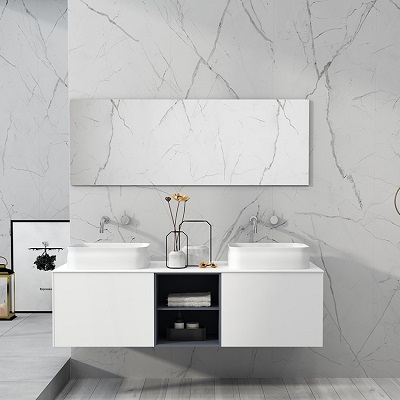SPC (Stone Plastic Composite) wall panels are becoming increasingly popular for interior design due to their durability, versatility, and ease of installation. like any material, there are specific places where SPC wall panels are ideal and others where they may not be the best choice.
Here’s a guide on where to use SPC wall panels and where not to:
Places You Should Use SPC Wall Panels
Bathrooms (Dry Areas): SPC wall panels are water-resistant, making them a good option for areas like bathrooms. they are more suited for dry areas (such as around sinks or dry walls) rather than areas with constant direct water exposure (like a shower).
Kitchens: SPC panels can handle moisture, so they are great for kitchen backsplashes or areas around countertops. They’re easy to clean and maintain, and they won’t warp or swell like wood might when exposed to humidity.
Living Rooms and Bedrooms: Due to their wide variety of finishes (such as wood, stone, or patterned looks), SPC wall panels are a popular choice for creating accent walls or feature walls in living rooms or bedrooms.
Commercial Spaces (Offices, Retail, Hotels): The durability and ease of maintenance make SPC panels ideal for commercial environments where aesthetics and practicality are important, such as office buildings, hotel lobbies, and retail spaces.
Hallways and Entryways: SPC wall panels can withstand high traffic areas, and they can be a stylish and durable solution for hallways or entryways where walls might get scuffed or scratched.
Basements: Basements often experience varying humidity levels. SPC wall panels are resistant to moisture and mildew, making them a good choice for these spaces.
Gyms and Recreational Spaces: For commercial gyms or home gyms, SPC panels are durable and easy to clean, which makes them a great choice for walls in these spaces.
Places You Shouldn’t Use SPC Wall Panels
Shower Enclosures or Areas with Direct Water Exposure: While SPC panels are water-resistant, they should not be used in areas with constant direct water exposure, such as inside a shower or bathtub enclosure. The continuous moisture may cause them to warp or degrade over time.
Exteriors (Outdoor Spaces): SPC wall panels are typically designed for interior use. While some newer products are UV-resistant, they are generally not recommended for external applications, as they may degrade under prolonged exposure to sunlight, temperature fluctuations, or moisture.
High Heat Areas (Near Stoves, Fireplaces): SPC panels are not designed to withstand extreme heat. Areas like walls directly behind stoves or fireplaces may be too hot for the material, potentially causing damage or deformation.
Areas with Extreme Moisture or Humidity: While SPC is resistant to moisture, areas with extreme and constant moisture, such as saunas or rooms that are regularly exposed to high levels of humidity, are not ideal for SPC panels.
High-Impact or Heavy-Duty Areas: Although SPC panels are durable, they are not as tough as materials like metal or stone. In spaces where there is heavy impact, such as in warehouses or industrial environments, SPC panels may not be the best option.
Spaces with Substantial Temperature Fluctuations: Extreme temperature fluctuations can cause SPC panels to expand or contract. Using them in spaces with wide temperature ranges, like uninsulated attics or areas prone to freezing temperatures, could affect their long-term performance.


































